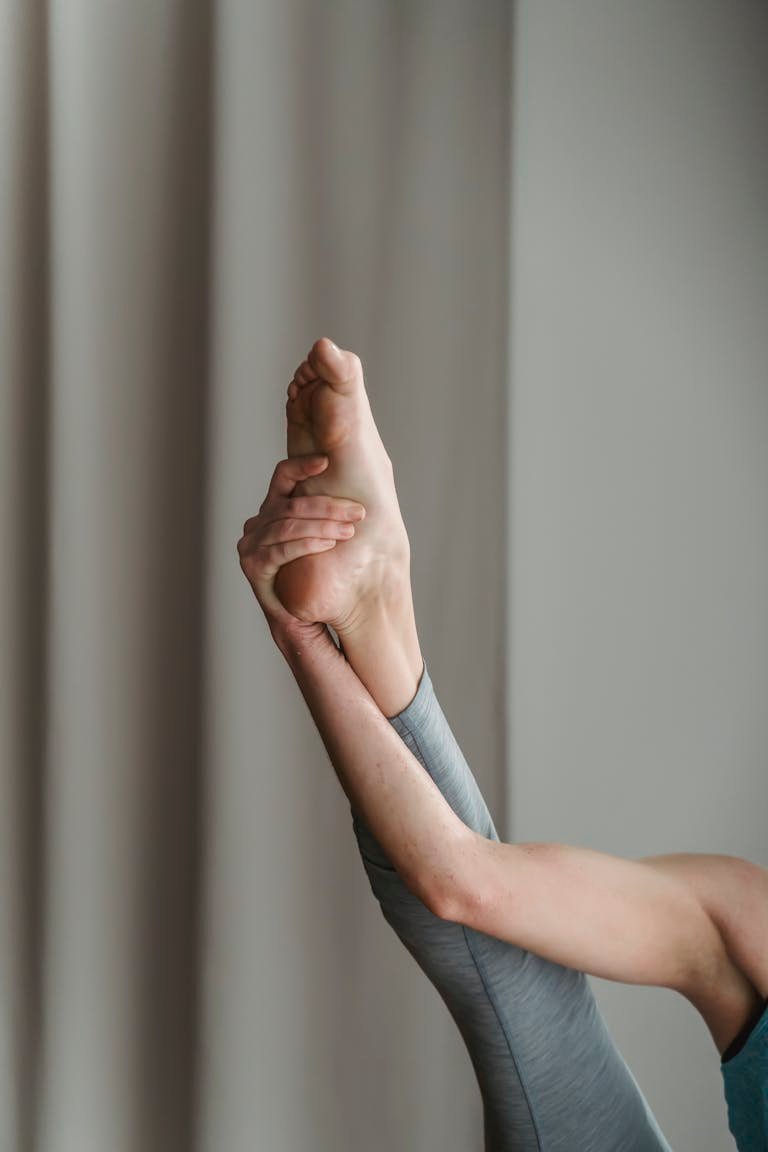Best Peroneal Tendonitis Exercises: A Comprehensive Guide
Peroneal tendonitis is a common issue among athletes and fitness enthusiasts, characterized by inflammation in the tendons running along the outer side of the ankle. This condition can cause significant discomfort and hinder physical performance, making it crucial for individuals to address it effectively.
Engaging in Peroneal Tendonitis Exercises to strengthen and stretch the peroneal tendons can be highly beneficial in managing and preventing peroneal tendonitis. This article will explore some of the best exercises for this condition, emphasizing their relevance to maintaining overall health and fitness.
Understanding Peroneal Tendonitis
Peroneal tendonitis occurs when the peroneal tendons, which stabilize the foot and ankle, become inflamed due to overuse or injury. Common symptoms include pain, swelling, and a feeling of instability in the ankle. Effective exercises can help alleviate these symptoms by promoting healing and strengthening the surrounding muscles and tendons.
Key Peroneal Tendonitis Exercises
1. Ankle Eversion with Resistance Band
Description: This exercise targets the peroneal muscles directly, helping to strengthen them and reduce the strain on the tendons.
How to Perform:
- Sit on the floor with your legs extended.
- Loop a resistance band around the ball of your foot, holding the ends of the band with your hands.
- Slowly push your foot outward against the resistance band, then return to the starting position.
- Perform 3 sets of 15 repetitions on each foot.
Benefits:
- Increases the strength of the peroneal muscles.
- Enhances the stability of the ankle joint.
2. Heel Raises
Description: Heel raises are a simple yet effective exercise to strengthen the calf muscles, which support the peroneal tendons.
How to Perform:
- Stand with your feet hip-width apart, using a wall or chair for balance.
- Slowly lift your heels off the ground, rising onto your toes.
- Hold for a few seconds before slowly lowering your heels back to the ground.
- Perform 3 sets of 20 repetitions.
Benefits:
- Strengthens the calf and peroneal muscles.
- Improves balance and stability.
3. Single-Leg Balance
Description: This exercise improves proprioception and stability, crucial for preventing further injury.
How to Perform:
- Stand on one leg, keeping the other foot off the ground.
- Maintain your balance for 30 seconds to 1 minute.
- For added difficulty, close your eyes or stand on an unstable surface.
- Perform 3 sets on each leg.
Benefits:
- Enhances balance and proprioception.
- Strengthens the stabilizing muscles of the ankle.
Stretching Exercises
4. Peroneal Tendon Stretch
Description: Stretching the peroneal tendons can help reduce tension and prevent inflammation.
How to Perform:
- Sit with one leg crossed over the opposite knee.
- Gently pull the toes of the crossed leg towards your shin until you feel a stretch on the outer side of your foot and ankle.
- Hold the stretch for 20-30 seconds.
- Perform 3 sets on each leg.
Benefits:
- Increases flexibility of the peroneal tendons.
- Reduces the risk of tendonitis.
5. Calf Stretch
Description: Stretching the calf muscles can relieve tension in the peroneal tendons.
How to Perform:
- Stand facing a wall, with one foot in front of the other.
- Keep your back leg straight and press your heel into the ground.
- Lean forward towards the wall until you feel a stretch in the calf of your back leg.
- Hold for 20-30 seconds.
- Perform 3 sets on each leg.
Benefits:
- Improves flexibility of the calf muscles.
- Reduces strain on the peroneal tendons.
Data and Case Studies
Research has shown that targeted exercises significantly reduce symptoms of peroneal tendonitis. A study published in the Journal of Athletic Training found that participants who engaged in a structured exercise program experienced a 40% reduction in pain and a 30% improvement in function compared to those who did not exercise. Furthermore, incorporating both strengthening and stretching exercises was found to be the most effective approach.
Peroneal tendonitis, also known as peroneal tendinopathy, is an inflammatory condition affecting the peroneal tendons, which are located on the outside of the lower leg and run behind the outer ankle bone (lateral malleolus). These tendons, the peroneus longus and peroneus brevis, play a crucial role in stabilizing the ankle and foot, particularly during weight-bearing activities and movements that involve turning the foot outward.
Causes
Peroneal tendonitis is typically caused by overuse or repetitive stress, leading to inflammation and irritation of the tendons. Common contributing factors include:
- Overuse: Engaging in activities that involve repetitive ankle movements, such as running, especially on uneven surfaces or slopes, can strain the tendons.
- Sudden Increase in Activity: A rapid escalation in physical activity levels, such as increasing running distance or intensity, can overload the tendons.
- Improper Footwear: Wearing shoes that do not provide adequate support can contribute to the development of peroneal tendonitis.
- Foot Structure: Individuals with high arches or other structural abnormalities in the foot are more prone to this condition.
- Previous Injuries: A history of ankle sprains or other injuries can weaken the tendons and increase the risk of tendonitis.
Symptoms
The primary symptoms of peroneal tendonitis include:
- Pain: Typically located at the back and outside of the ankle, the pain often worsens with activity and improves with rest.
- Swelling: Swelling around the affected area is common.
- Instability: A feeling of instability or weakness in the ankle, especially during weight-bearing activities.
- Warmth: The affected area may feel warm to the touch.
- Pain with Movement: Pain may be exacerbated by turning the foot in or out.
Prevention
Preventive measures can help reduce the risk of developing peroneal tendonitis:
- Proper Footwear: Wearing supportive shoes that fit well can help prevent overuse injuries.
- Gradual Increase in Activity: Gradually increasing the intensity and duration of physical activities can help avoid overloading the tendons.
- Stretching and Strengthening: Regular stretching and strengthening exercises for the calf and peroneal muscles can improve flexibility and resilience.
- Avoiding Uneven Surfaces: Running or walking on flat, even surfaces can reduce the risk of tendon strain[1][3][9].
Conclusion
Peroneal tendonitis can be a debilitating condition, but with the right exercises, it is manageable. Strengthening and stretching the peroneal tendons and surrounding muscles can significantly reduce pain and improve ankle stability.
Incorporating these exercises into your fitness routine can help maintain healthy tendons and prevent future injuries. For further reading, consider exploring ankle rehabilitation and tendon health resources or consult a physical therapist for personalized exercise recommendations.
For more information on peroneal tendonitis exercises and ankle health, check out our recommended resources and consult with healthcare professionals specialized in sports medicine and rehabilitation.
References
[1] https://www.medicalnewstoday.com/articles/318349
[2] https://carusofootandankle.com/peroneal-tendonitis/
[3] https://www.nhslanarkshire.scot.nhs.uk/services/physiotherapy-msk/peroneal-tendinopathy/
[4] https://www.webmd.com/pain-management/what-to-know-peroneal-tendonitis
[5] https://medschool.cuanschutz.edu/docs/librariesprovider65/courtney-grimsrud/patient-handouts/peroneal-tendonitis.pdf?sfvrsn=388192ba_2
[6] https://www.footcaremd.org/conditions-treatments/ankle/peroneal-tendinosis
[7] https://www.foothealthfacts.org/conditions/peroneal-tendon-injuries
[8] https://www.mercy.com/health-care-services/orthopedics-sports-medicine-spine/specialties/foot-ankle/conditions/peroneal-tendonitis
[9] https://www.bonsecours.com/health-care-services/orthopedics-sports-medicine/foot-ankle/conditions/peroneal-tendon-injury







